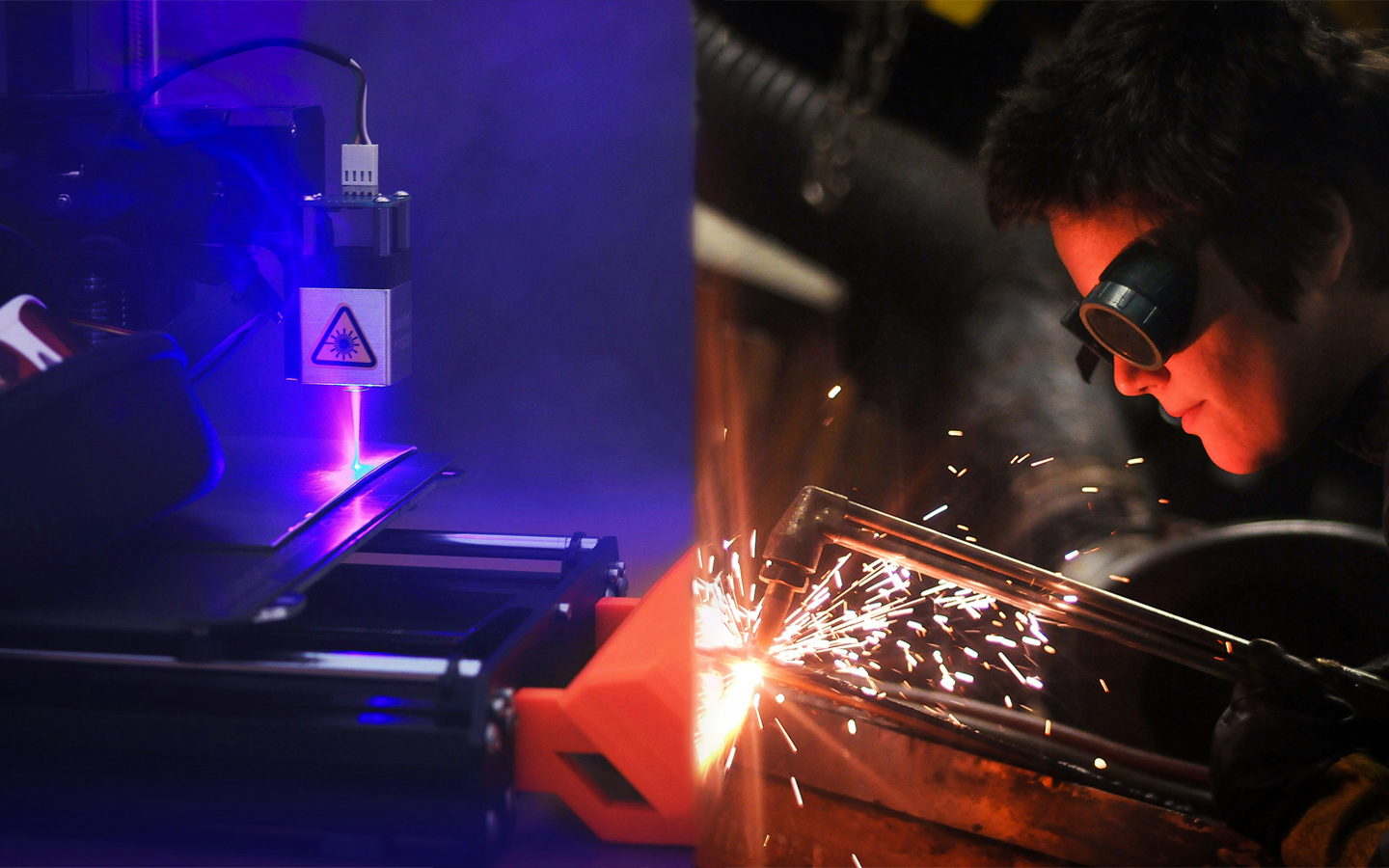Differences between laser and plasma cutting
Material cutting is one of the key processes in industry, and choosing the right technology to carry it out can have a significant impact on quality, cost and production rates. The two most popular methods used in this field are laser cutting and plasma cutting. While both of these technologies use different energy sources to precisely cut through materials, they differ in terms of mechanism of operation, accuracy, speed, as well as cost.
Below, we will try to discuss the main differences between laser and plasma cutting to help you understand which technology will be the best choice depending on your specific needs.
Operating principle
The main difference between laser and plasma cutting lies in the way the energy required to cut through the material is generated. Laser cutting involves directing a beam of laser light with a very high concentration of energy at the material. The laser beam, usually generated by a CO2, optical fibre or laser disk, heats and melts the material in a very small area, which in turn allows even complex shapes to be cut with precision.
Plasma cutting, on the other hand, uses a jet of plasma, i.e. an ionised gas that reaches very high temperatures (up to 30,000°C). The plasma melts the material and then blows it out of the cutting area. This technology is widely used for cutting electrically conductive metals such as steel, aluminium and copper.
Cutting accuracy
One of the key differences between the two methods is also the cutting accuracy. This is because laser cutting is characterised by exceptional precision. Thanks to its very thin light beam (typically 0.1 to 0.3 mm wide), the laser enables workpieces with very tight tolerances to be cut. This is particularly important in industries requiring precision, such as electronics, medicine or aerospace. The edges after laser cutting are smooth, reducing the need for further finishing.
Plasma cutting, while also achieving accurate cuts, does not offer the same precision as a laser. The width of the cut (known as the cutting gap) is typically between 1 and 3 mm, which is much greater than with a laser. In addition, edges after plasma cutting may require additional processing, such as grinding, to remove contaminants and achieve a smooth surface.
The type of material that can be cut with both technologies is another differentiating factor. Thus, laser cutting works well not only for metals such as carbon steel, stainless steel or aluminium, but also for non-metallic materials such as wood, plastics, ceramics or textiles.
Plasma cutting, on the other hand, is limited to electrically conductive materials such as various types of metals. Unfortunately, it cannot be used to cut non-metallic materials such as plastic or glass. However, for thick metals, especially aluminium and steel, plasma performs admirably, making it a popular choice in heavy industry where the cutting of thick components is required.
Cost and efficiency
Another important aspect that differentiates the two technologies is the cost of both the machine itself and the operation. Laser cutting tends to be more expensive, both in terms of purchasing the machine and maintaining it. Laser machines are more technologically complex and require high-quality cooling systems and regular maintenance. On the other hand, the higher cost is compensated for by the precision, the lack of further processing and the ability to cut a wide range of materials.
As you may have guessed, plasma cutting is cheaper compared to laser cutting, both in terms of equipment purchase and operating costs. However, you do need to factor in the potential cost of additional machining that may result from the need to finish the cut edges. Plasma machines are more affordable and, although requiring gas consumption, are relatively cheap to operate.
Applications
The final choice between laser and plasma cutting therefore depends largely on the specifics of the project and expectations of cut quality. The use of laser cutting is preferred where precision, edge smoothness and the ability to process thin and medium materials are key. It is used extensively in the precision industry, electronic component manufacturing, medical tooling and projects requiring detail and precise tolerances.
Plasma cutting, on the other hand, is best suited to the machining of thicker metals such as structural steel, building components, pipes or large sheets of metal. It is widely used in heavy industry, construction, the oil and gas industry and the manufacture of large steel structures.



